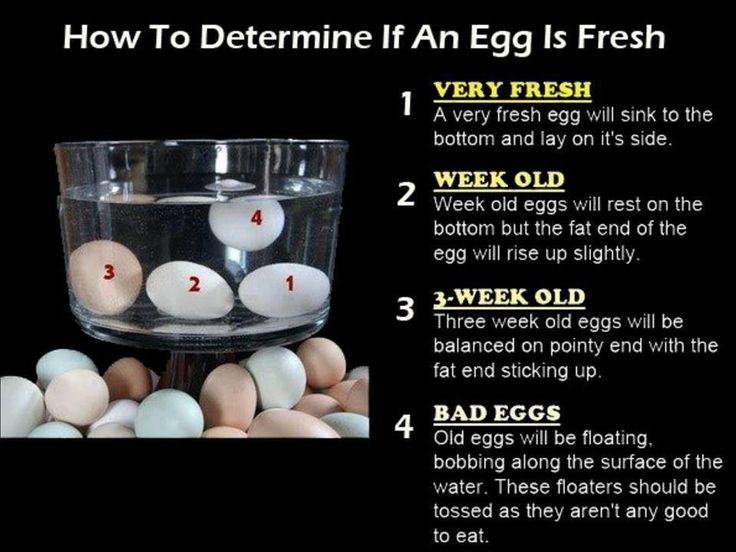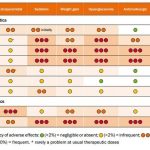
Contents
How to Determine if an Egg Is Good or Bad?
Wondering how to tell if an egg is bad? Use various methods to determine its quality, such as inspection, sniffing, float testing, and other techniques.
If you’re wondering how to tell if an egg is bad, the easiest method is checking the expiration date. However, eggs often remain edible for weeks after the printed date on the carton.
More reliable methods involve using your senses to inspect, smell, and shake the egg. Another technique is placing it in a glass of water to see if it floats. These simple methods can be done at home.
Store-bought egg cartons display expiration dates or sell-by dates. To ensure freshness, the expiration date should be within 30 days of the pack date.
Some cartons also have a Julian date, a three-digit number indicating the packing date. It doesn’t use the usual month, date, and year format.
In general, eggs stay good for 5 weeks after the pack date if refrigerated. Without a pack date, eggs should remain good for 3 weeks after purchase. However, if eggs are left unrefrigerated for extended periods or left on the counter overnight, bacteria could start growing, and they should be discarded.
Eggs may decline in quality after the expiration date, but they can still be safe to eat for several weeks. Before discarding them, use other methods to confirm whether an egg is good or bad.
Inspecting the Exterior
Avoid buying cracked eggs because bacteria can enter through the shell. If eggs crack during transport, crack them into a clean container and refrigerate them for up to 2 days.
Eggshells come in various colors, including white, brown, green, and blue. As long as the shell doesn’t change color, eggs of any color are safe to eat. However, a dirty or slimy shell should be discarded as it may indicate bacterial growth.
Improper washing or storage in humid conditions can lead to mold growth on the outside of eggs. Mold appears as powdery spots that can be wiped off.
Examining the Interior
Crack an egg on a white plate to inspect the inside. Discoloration of the egg whites or yolk, such as green, pink, or blue, indicates bacterial growth and renders the egg unsafe to eat.
Yolk colors can vary slightly but should always be yellow when raw. The color may differ depending on the hen’s diet, but it doesn’t affect the quality or flavor of the egg.
A small red spot next to the yolk is normal and occurs when a blood vessel around the yolk bursts. While it can be removed, eating it is harmless.
Cloudy egg whites are normal and indicate freshness. Eggs naturally contain carbon dioxide, making the whites look cloudy. Over time, the carbon dioxide is released, and the whites become clear.
A green or gray ring around the yolk of a hard-boiled egg is a result of overcooking, not bacterial growth. These eggs are safe to eat.
Using the Sniff Test
The sniff test is a foolproof way to determine if eggs have gone bad. Fresh eggs have no smell, but bad eggs emit a distinct odor, often resembling sulfur. If your eggs smell like sulfur, they’ve begun to rot and should not be consumed.
As eggs age, their proteins break down, producing hydrogen sulfide, a toxic chemical that gives off a noticeable smell in both cooked and raw eggs. If you detect a sulfur odor, discard the eggs, clean any surfaces they touched, and wash your hands.
Shaking the Egg
Hold an egg up to your ear and shake it. If you hear or feel liquid moving, the egg is old and the yolk has become watery. However, this doesn’t necessarily mean the egg is rotten. Perform a visual or sniff test to confirm its safety.
QUESTION
Using the Float Test
The float test is a simple way to determine if eggs are still good without cracking them open. Place an egg in a glass of cold water, ensuring it is completely submerged. If it sinks, it’s safe to eat. If it floats, the egg is old and likely not safe to eat.
This test relies on the fact that over time, the yolk and egg white decompose, releasing gas through tiny pores. This process makes the egg less dense than the surrounding water, causing it to float.
Fresh eggs, which haven’t started to spoil, are denser than water. They sink and rest flat on their side. An egg that sinks but stands on its end is older but still likely safe to eat.
When conducting the float test, always use unsalted water. Salt increases water density, causing both good and bad eggs to float. Cold water should be used instead of room temperature or hot water, as temperature affects water density.
The float test applies to all egg types, including those from chickens, ducks, and quails.
Proper Egg Storage
Correct storage ensures eggs remain safe to eat and prolongs their shelf life. Refrigerate eggs as soon as possible after purchase at or below 40 degrees Fahrenheit.
Keep eggs in their original carton to protect them from damage and retain the expiration date information.
Hard-boiled eggs should be stored in the refrigerator and consumed within 1 week of cooking.
If eggs are close to expiration, they can be frozen for up to a year. Avoid freezing them in their shells.
- Crack the eggs and beat the yolks and whites together.
- Store the eggs in a freezer-safe container or bag.
- To use them, thaw the eggs in the refrigerator overnight – never thaw on the counter.
Health Risks of Eating Bad Eggs
Salmonella is the primary concern with bad eggs. This bacteria can be found on both the exterior and interior of eggs. Symptoms of Salmonella usually appear between 6 hours and 6 days after consuming contaminated food and include:
- Diarrhea
- Abdominal cramps
- Fever
- Nausea
- Vomiting
Most people recover within a week without requiring medical treatment or hospitalization. However, children under 5 years and adults over 65 are at higher risk. Consult a doctor if you are concerned about your health or the health of someone else.
Salmonella is rarely transmitted person-to-person, so there’s no need to worry about spreading it. Instead, focus on thorough handwashing after using the restroom and before handling food.
To prevent Salmonella infection from eggs, cook them thoroughly until both the yolk and white are firm. Avoid consuming batter or dough made with raw eggs. After handling raw eggs, wash your hands with soap and water. Clean or wash any utensils, dishes, or surfaces that came into contact with the eggs.
Consider purchasing pasteurized eggs, as they have been treated with warm water to kill bacteria, reducing the risk of Salmonella and other foodborne illnesses.
Can Expired Eggs Be Consumed?
Expired eggs can still be eaten if stored properly and pass inspection. However, check for discoloration, perform a water float test, and give them a sniff. If the yolks or whites are discolored, the eggshells are slimy, or a sulfur-like odor is present, the eggs should be discarded. It’s best to throw them away and purchase a new carton.
If you want to be extra cautious when using expired eggs, use them in fully cooked items such as casseroles or baked goods to reduce the risk of foodborne illness.
References:
AskUSDA, U.S. Department of Agriculture: "How do commercial plants pasteurize an egg?"
Centers for Disease Control and Prevention: "Salmonella and Eggs."
Cleveland Clinic: "Salmonella."
Egg Safety Center: "Six things to know about the inside of an egg," "Top five egg safety questions."
The Incredible Egg: "Egg Handling and Care Tips," "Frequently Asked Questions About Eggs," "How to Freeze Eggs."
Science Notes: "Why Bad Eggs Float and Good Eggs Sink."
University of Hawai’i at Manoa, Exploring Our Fluid Earth: "Density, Temperature, and Salinity."
U.S. Food and Drug Administration: "What You Need to Know About Egg Safety."


